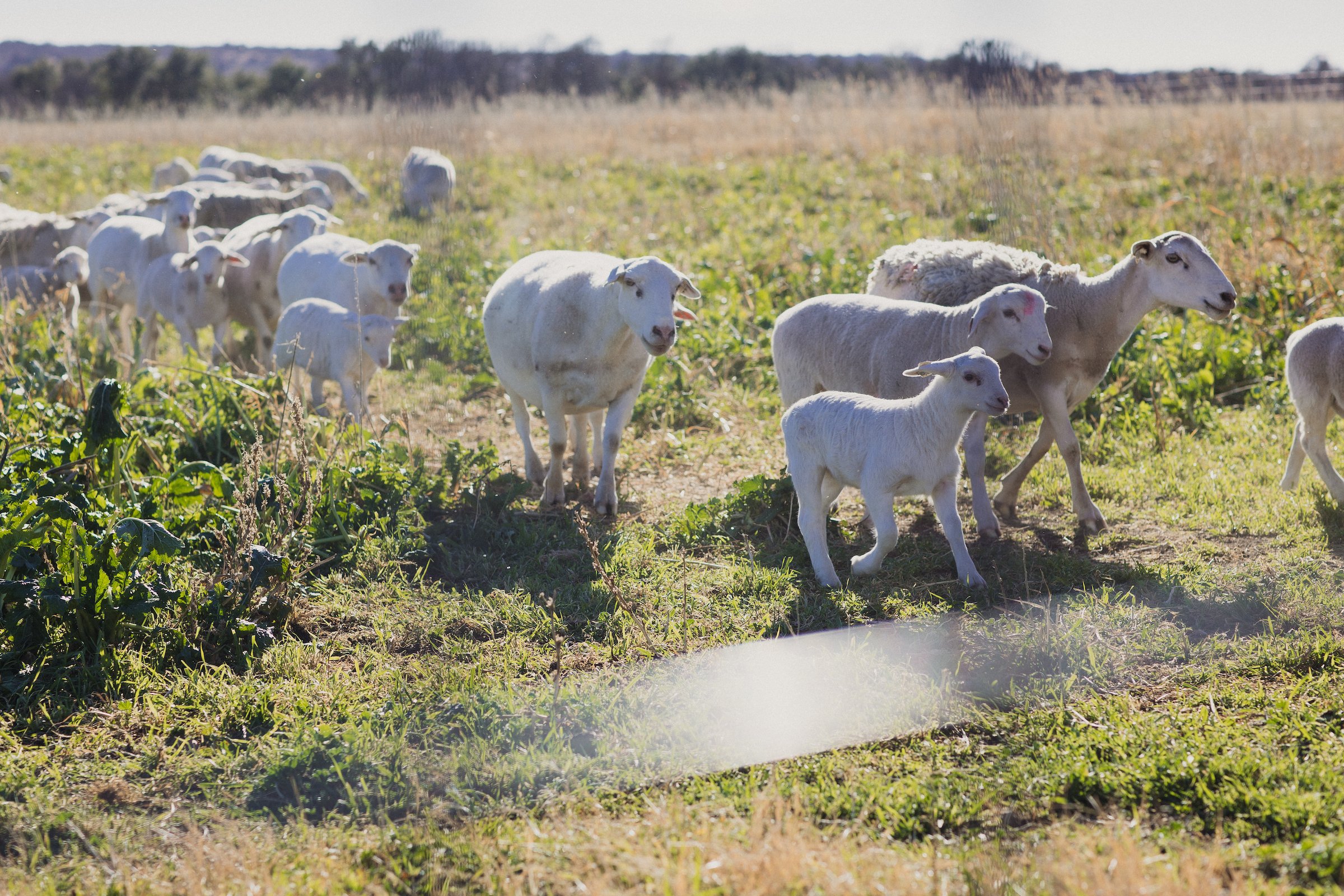Regenerative farming, says sheep rancher and veterinarian Alan McAnelly, is nothing new. In fact, this holistic, conservationist approach draws from farming methods that existed long ago. Historically, anywhere people have had to subsist off what they could raise on poor-quality soil, they have tried to improve it. In recent years, regenerative farming has become increasingly popular as a cost-effective way to improve your land and livestock with an eye towards sustainability. It requires taking a big picture view of the land, and techniques include doing what you can to plant a diverse array of crops, prevent the erosion of topsoil, encourage native plants and insects to thrive, and help the land absorb and retain as much water as possible.
It also means raising sheep. According to McAnelly, sheep are the perfect livestock to raise in a regenerative farming environment: “For their digestive system and how they utilize water, sheep are just made for grazing pastures. They’re better than any other livestock for using all the weeds.” He should know. After graduating from Texas A&M University in 1969, McAnelly was a veterinarian for decades before he took up sheep farming just outside Hamilton, Texas.
Unlike the Panhandle farm where he grew up, McAnelly does not plow the soil at his ranch, Hamilton Sheep Station, nor does he amend it with fertilizer. Plowing releases carbon into the air, disrupts vital earthworm and dung beetle populations, and compacts the soil—and besides, by his own admission, his land is substandard. “You might say rocky,” he laughs. “There’s no water underneath it. It’s nice land; it’s pretty land. But it’s a poor-quality land.” In other words, it may not be good for growing traditional cash crops, but it’s great for raising sheep.
“We may be more of a sheep operation because the lack of water keeps us from raising corn,” says McAnelly. And to that end, he caters to their needs, planting cover crops like clover, Sorghum-Sudangrass, and Hairy Vetch that both improve the soil and feed his herd. He even shares his vegetables with them. “My little lambs do very well on cover crops,” he says. “They can eat a little turnip, they can eat a little beet, they can have a little radish. It's like a salad bar.” McAnelly selects crops to improve nitrogen content, organic content, and help the land retain more water. He sees his land getting more productive each year—and the sheep produce better meat because the animals’ diets are rich and diverse.
Particularly as the already-hot climate of Texas endures progressively dryer summers that come with climate change, farming methods that conserve water are crucial. “It’s not raining now, and it’s tough,” he says. “Nothing works without rain.” But what you can do is make the small amount of rain that does fall support the ranch for longer. McAnelly explains it thusly: Plowing compacts the land, meaning no matter how much rain falls, plowed land absorbs less of it. To increase absorption, you need softer soil. This is achieved in a few ways, including supporting the earthworms and dung beetles who literally dig tiny holes through the soil, adding organic matter to the soil. Crops chosen for their roots’ ability to loosen soil also help. “I can’t make it rain, but I can make it further between rains,” he says, noting his land will absorb “several inches more” rain than a plowed field during the same rain event.
At Hamilton Sheep Station, regenerative farming is a practical choice, but it’s also a beneficial one from nearly every angle. It’s a cost-effective method of farming, because you aren’t paying for large-scale plowing equipment, the diesel required to run them, or fertilizer. It’s better for the environment, because you’re improving the topsoil, supporting insect populations, and not using an excess of chemicals. And the sheep are grazing to their hearts content on a diverse diet of cover crops, vegetables, and weeds. “I’m using agriculture with a low-cost input to support the health of the soil, plants, and animals. That’s the bottom line. That’s the whole story right there.”


